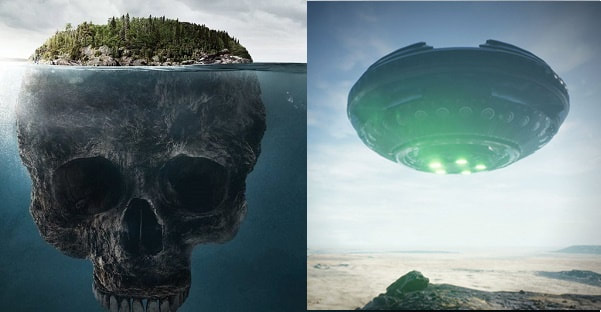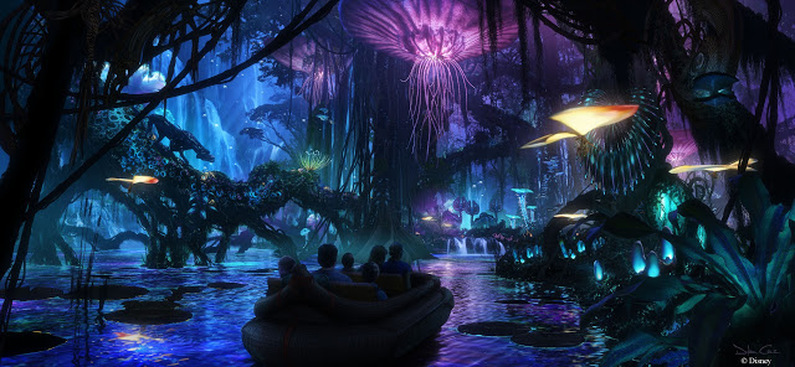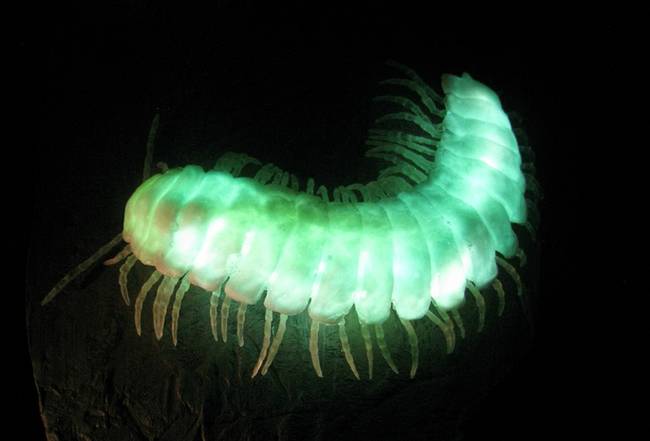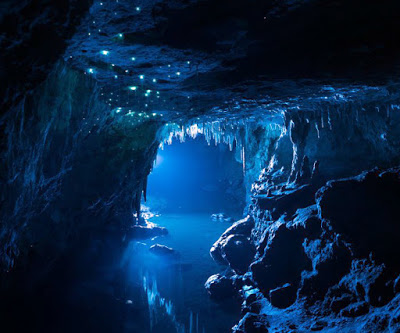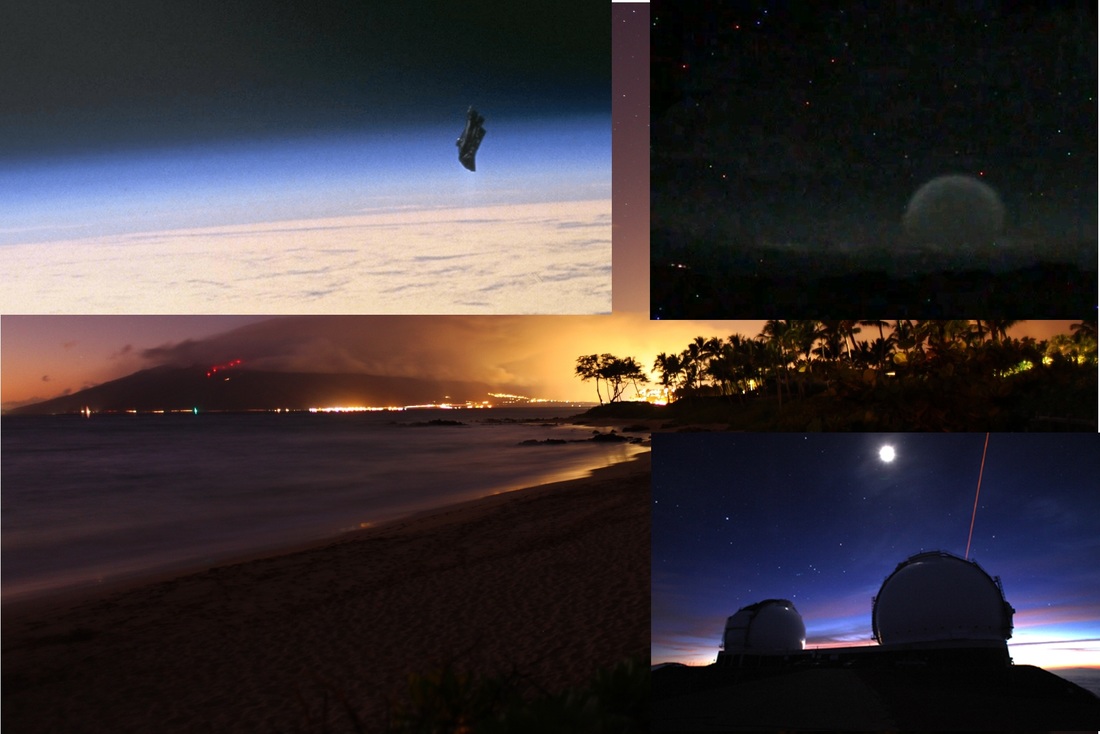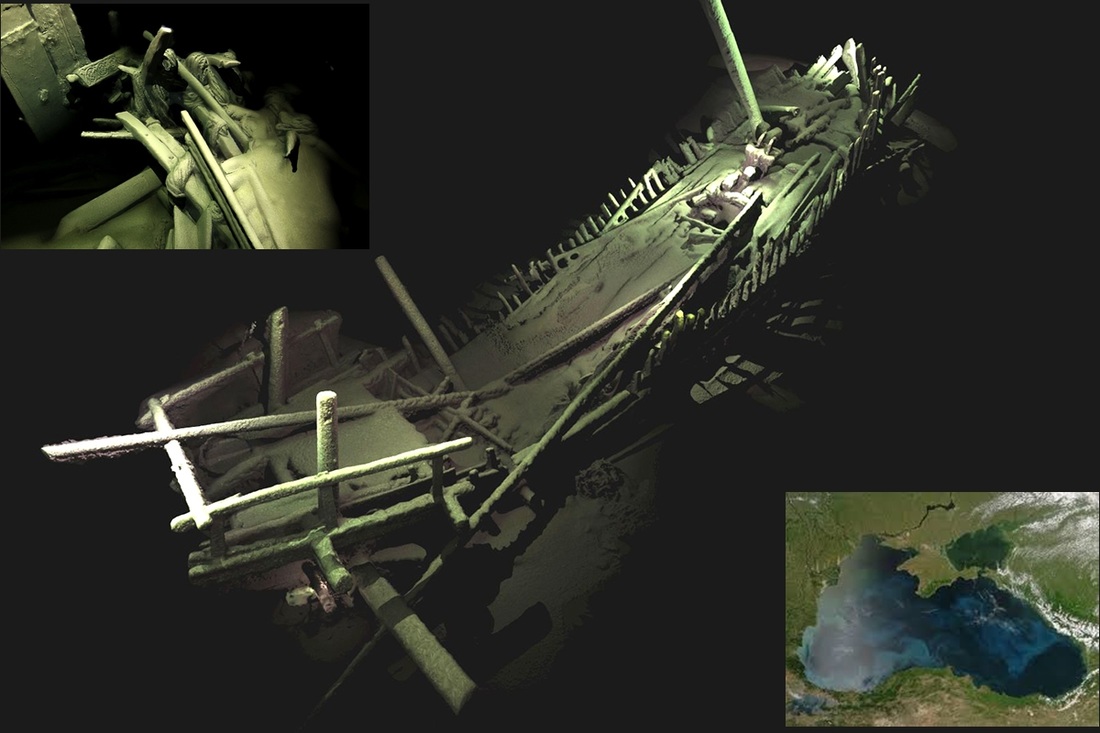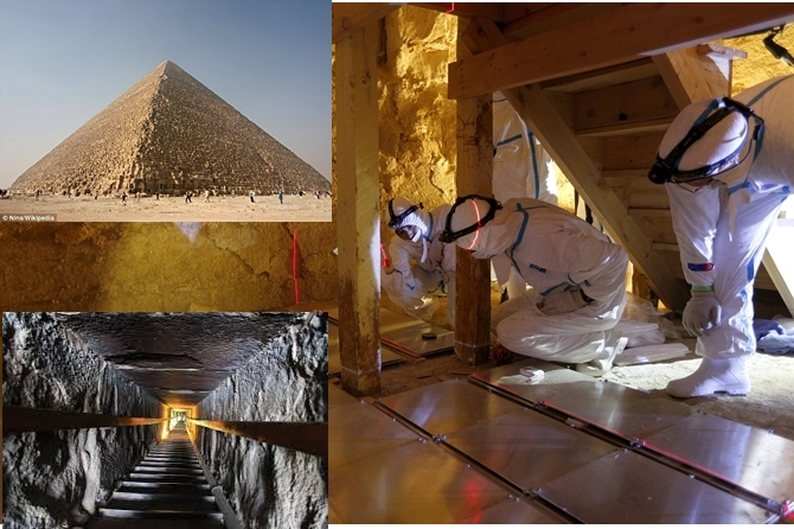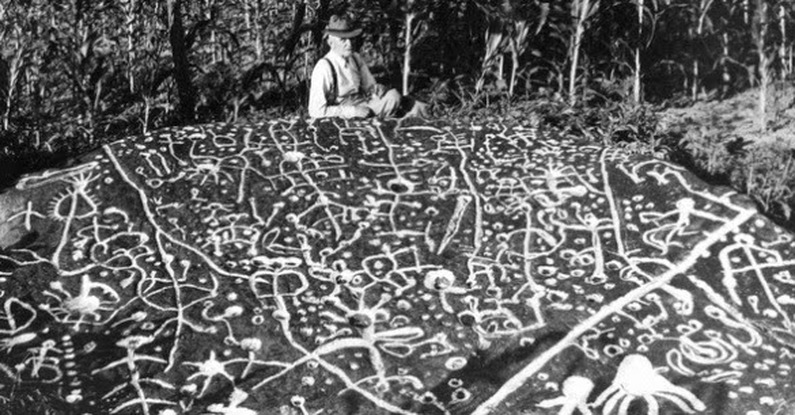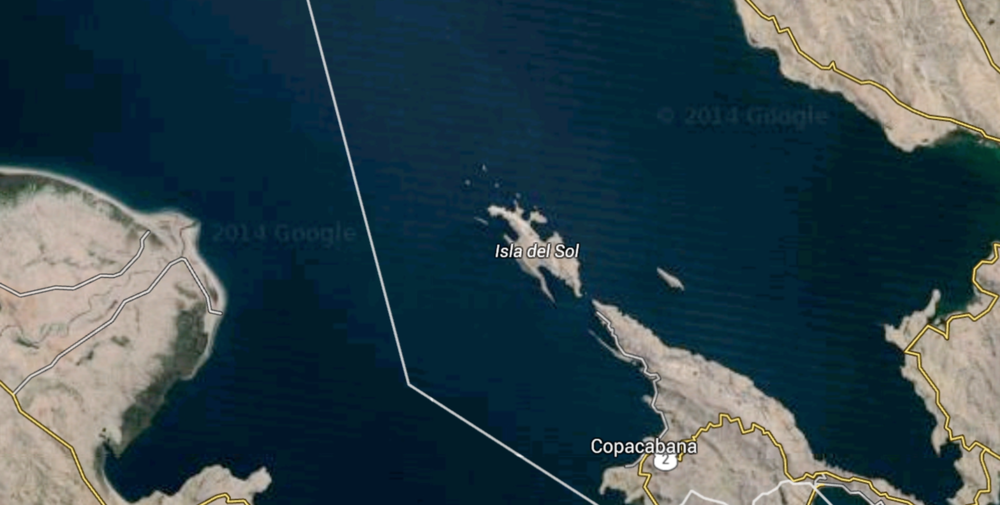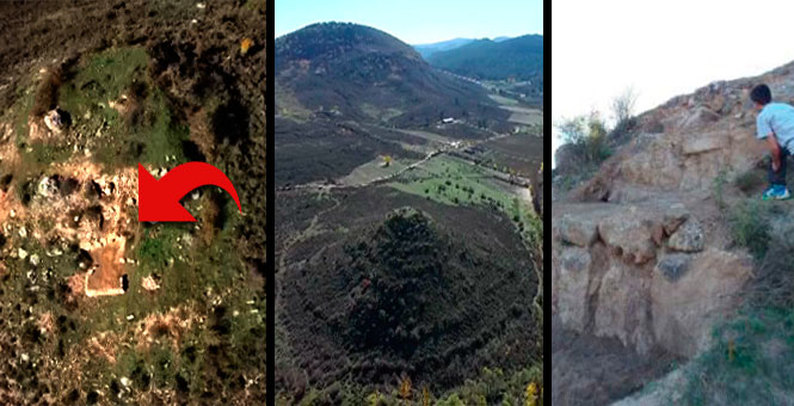|
A Kremlin report detailing the meeting held between Prime Minister Putin and US Vice President Biden this past week shockingly reveals an American plea for Russian help in establishing an “Earth Wide” missile defense plan to protect our planet from an “alien invasion” expected in late 2017 after NASA satellites revealed an “incoming” fleet of “miles-wide” UFO’s that have entered our Solar System. Source: http://www.whatdoesitmean.com/
16 Comments
Excavations being carried out at Geval Castle in Central Anatolia, Turkey, have revealed a secret tunnel that had been built by the Hittites about 4,000 years ago. Around 150 meters of the tunnel, which had been closed off with a vault, have been investigated so far. Geval Castle sits on the peak of Takkel Mountain at an altitude of 1,700 meters, just 7 kilometers west of Konya, the seventh most populous city in Turkey, and once home to many civilizations during the Hittite, Hellenistic, Roman, Byzantine, Seljuk, Karamanids and Ottoman eras. Its strategic position, with a 360-degree view of the surrounding area, reveals Geval Castle’s key role as a defensive structure in the region. Can there be light below the surface of the Earth, without any exposure to the Sun? Surprisingly, the answer is YES. Bioluminescent organisms have the ability to glow almost like magic. Many organisms use their natural ability to produce light to trick predators, to attract mates and even to communicate. The word for this seemingly magical ability is called “bioluminescence,” which comes from “bio,” meaning life, and “lumin,” meaning light. Most of these organisms, such as plankton, glow blue, but a few glow red, green, or orange. Some tiny animal plankton (zooplankton) are big enough to see with the unaided eye. Most bioluminescent zooplankton don’t glow in the dark themselves, but instead squirt globs of glowing chemicals into the water. Some zooplankton use bioluminescence to attract a mate, or to form reproductive swarms. Not only is nature’s biochemistry fascinating, it can also be extremely beautiful, especially given the backdrop of a dark, misty cave. Glow worm is the common name for various groups of insect larvae and adult larviform females that glow through bioluminescence. They may sometimes resemble worms, but are actually insects. The glow they produce, through by a chemical reaction, is incredibly efficient; nearly 100% of the energy input is turned into light (Compare this to the best light-emitting diodes at just 24%). Australia and New Zealand have some of the most spectacular caves, where one can go on guided tours to witness this natural phenomenon up close. (see video below) Why do some mushrooms emit light? Making light isn’t common in fungi; scientists have described about 100,000 fungal species, and only 75 glow. Lab work has shown that the glow did not happen randomly or by accident. Scientists found that these mushrooms made light mostly at night, so experiments were conducted to determine why. According to studies (referenced in the book), in dark environments, bioluminescent fruit bodies may be at an advantage by attracting insects and other arthropods that could help disperse their spores. Conditions that affect the growth of fungi, such as pH, light and temperature, have been found to influence bioluminescence, suggesting a link between metabolic activity and fungal bioluminescence. 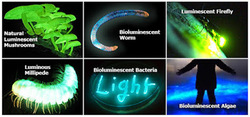 The diversity of creatures with this ability is equally astonishing, from algae and the common firefly to deep-sea dwellers that are rarely seen by humans. What's also fascinating is that many of these creatures are not closely related, and bioluminescent traits have seemingly evolved separately at least 30 times. With countless well lit subterranean caves and glowing caverns, it makes one wonder what could be dwelling in vast unexplored areas under the crust. The idea that our planet consists of a hollow, or honeycombed, interior is not new. Some of the oldest cultures speak of civilizations inside of vast cavern-cities, within the bowels of the earth. According to certain Buddhist and Hindu traditions, secret tunnels connect Tibet with a subterranean paradise, and they call this legendary underworld Agartha. In India, this underground oasis is best known by its Sanskrit name, Shambhala, thought to mean 'place of tranquility.' Mythologies throughout the world, from North and South America to Europe and the Arctic, describe numerous entrances to these fabled inner kingdoms. Many occult organizations, esoteric authors, and secret societies concur with these myths and legends of subterranean inhabitants, who are the remnants of antediluvian civilizations, which sought refuge in hollow caverns inside the earth. Assuming that the myths are true, and the Earth is partially hollow, how could life survive underground? How would organisms receive the ventilation required to breathe miles below the surface? Surface trees and rainforests are responsible for less than one-third of the Earth’s oxygen, while marine plants, such as phytoplankton, are responsible for between 70 to 80 percent of the oxygen in the Earth’s atmosphere. The vast majority of our oxygen comes from aquatic organisms. Phytoplankton, kelp, and algae produce oxygen as a byproduct of photosynthesis, a process which converts carbon dioxide and light into sugars which are then used for energy. 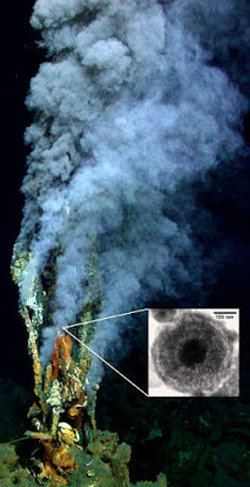 While the process of photosynthesis usually implies the presence of sunlight, the Sun is not the only available light or energy source able to power photosynthesis. Before the discovery of hydrothermal vents, and their ecosystems, scientists believed that only small animals lived at the ocean bottom, in seafloor sediments. They theorized that these animals received their food from above, because the established model of the marine food chain depended on sunlight and photosynthesis, just as the food chain on land does. Mainstream academia taught that this was the only way life could survive in the darkness of the deep seafloor. The discovery of hydrothermal vents changed all that. It became clear that vast communities of animals grew quickly and to larger than expected sizes in the depths without the aid of the Sun. Instead of using light to create organic material (photosynthesis), microorganisms at the bottom of the food chain at hydrothermal vents used chemicals such as hydrogen sulfide (chemosynthesis). At the seafloor, there are thriving ecosystems that receive energy not from the sun, but from the heat and chemicals provided by the planet itself. For many thousands of species dwelling in the deep, the energy to sustain life does not flow down from above, but comes up from the interior of the earth. Even in the unlikely scenario where every single tree were chopped down, we would still be able to breathe thanks to aquatic plant-life (ex. algae). The Earth has a tremendous amount of water, and these oceans, rivers, and lakes are teeming with numerous species of biologically active, oxygen-producing organisms. Are there any known sources of sustenance available that could provide for a large human population? What evidence is there that a sustainable biosphere could exist miles below the surface, totally isolated from the nourishment and the established life cycle provided by the sun? Where are the entrances to inner earth, and which races live inside? Author and anthropologist, Robert Sepehr, explores these questions and attempts to unlock their riddles, which have eluded any consideration in mainstream academia. Numerous endeavors have been undertaken to access the interior of the earth. Polar expeditions and battles, such as Operation Highjump, still remain largely classified, and have been shrouded in secrecy for decades, but scientific revelations validating the rumors surrounding these covert events, and their implications, are finally being exposed to daylight. What are the mysteries of inner Earth? Robert Sepehr's book, Gods with Amnesia: Subterranean Worlds of Inner Earth, is available on Amazon and all good bookstores. Reference: Atlantean Gardens via http://humansarefree.com/2016/10/inner-earth-agartha-glows-like-in-movie.html A secret report prepared by the Russian Federal Space Agency circulating in the Kremlin today states that the new inter-dimensional “Star Gate”opened on 22 June off the Hawaiian Islands in the Central Pacific was “triggered” by signals emanating from the mysterious ancient satellite orbiting our Earth known as “The Black Knight.” Most interesting to note about this “Star Gate” was its being filmed by a time-lapse webcam at the W.M. Keck Observatory which has the world's largest optical and infrared telescopes and is located at an elevation of 4,145 metres (13,600 ft) near the summit of Mauna Kea in Hawaii that when measured from its base is the tallest mountain on our planet. Source: http://www.whatdoesitmean.com/ Some of these vessels sank when the Byzantine Empire was in its heyday 1000 years ago, and some during more recent Ottoman times. Others sank in the 13th century, when Marco Polo was plying his trade across the globe. Most other wrecks from these time periods have been found in much shallower waters, where they have been eaten away down to just their hulls. But the new haul was preserved for centuries on the seabed thanks to low-oxygen conditions that prevent the decay of timber. As a result, the architecture of the upper deck appears in unprecedented detail, allowing historians to see how well the features match up to historical accounts. New images show finely carved rudders, masts, tillers, and even ropes that are almost perfectly preserved. Last week we posted news about 'mysterious cavities' being found in the Great Pyramid of Giza, and then later in our news briefs we noted that some - including Zahi Hawass - had rubbished the claims as wishful thinking. Now though we have information direct from the horse's mouth, with the Scan Pyramids team issuing a press release about their latest research efforts. It begins with the alleged cavity on the north face of the pyramid, just above the 'official' entry point to the pyramid. Read the press release HERE Traveling west out of Asheville, North Carolina and crossing the border into Jackson County, one can trace the Caney Fork River along toward the little Tuckasegee community, following NC Highway 107 heading out of the nearby campus town of Cullowhee. There, off a gravel road running between two pastures, is one of the most underrated–and often overlooked–wonders anywhere in the Eastern United States. Please share your comments Nasa Link: http://www.gigapan.com/gigapans/192649 Follow us on facebook: https://www.facebook.com/ufo.maniaII/ An amateur archaeologist by the name of Manuel April believes he has discovered a pyramid in the Cuenca region of Spain. It seems that there are Pyramids all over Europe, not only in Bosnia. According to reports from cuatro.com, located in the Cuenca region of Spain, an amateur archaeologist has found the first Spanish Pyramid in September this year. The remains of the pyramid can be found in the town of Canete. According to Cuatro Milenio, the pyramid is located on the hill known as El Cabezuelo. A shocking report prepared by the Federal Space Agency for Prime Minister Putin states that one of the United States most important space facilities, located in Fort Worth, Texas, was attacked this past week by ‘alien forces’ intent on destroying “Vimāna” technology transported their after its discovery by US Troops in Afghanistan, and as we had previously reported on in our December 21, 2010 report “World Leaders Flock To Afghanistan After Mysterious ‘Time Well’ Discovered”. According to this report, the National Aeronautics and Space Administration’s (NASA) Aviation Systems Division, located on a remote section of the giant Dallas-Fort Worth International Airport and responsible for engineering the software needed to control the airspace over North America, suffered a nearly half-hour long “sustained” attack resulting in the deaths of over 500 US Military and space contractors working on “Vimāna” technology. |
Helena MatiasEditor Archives
July 2024
Please take a look below at the amazing work of Author and researcher Stephen Quayle
Categories
All
|

